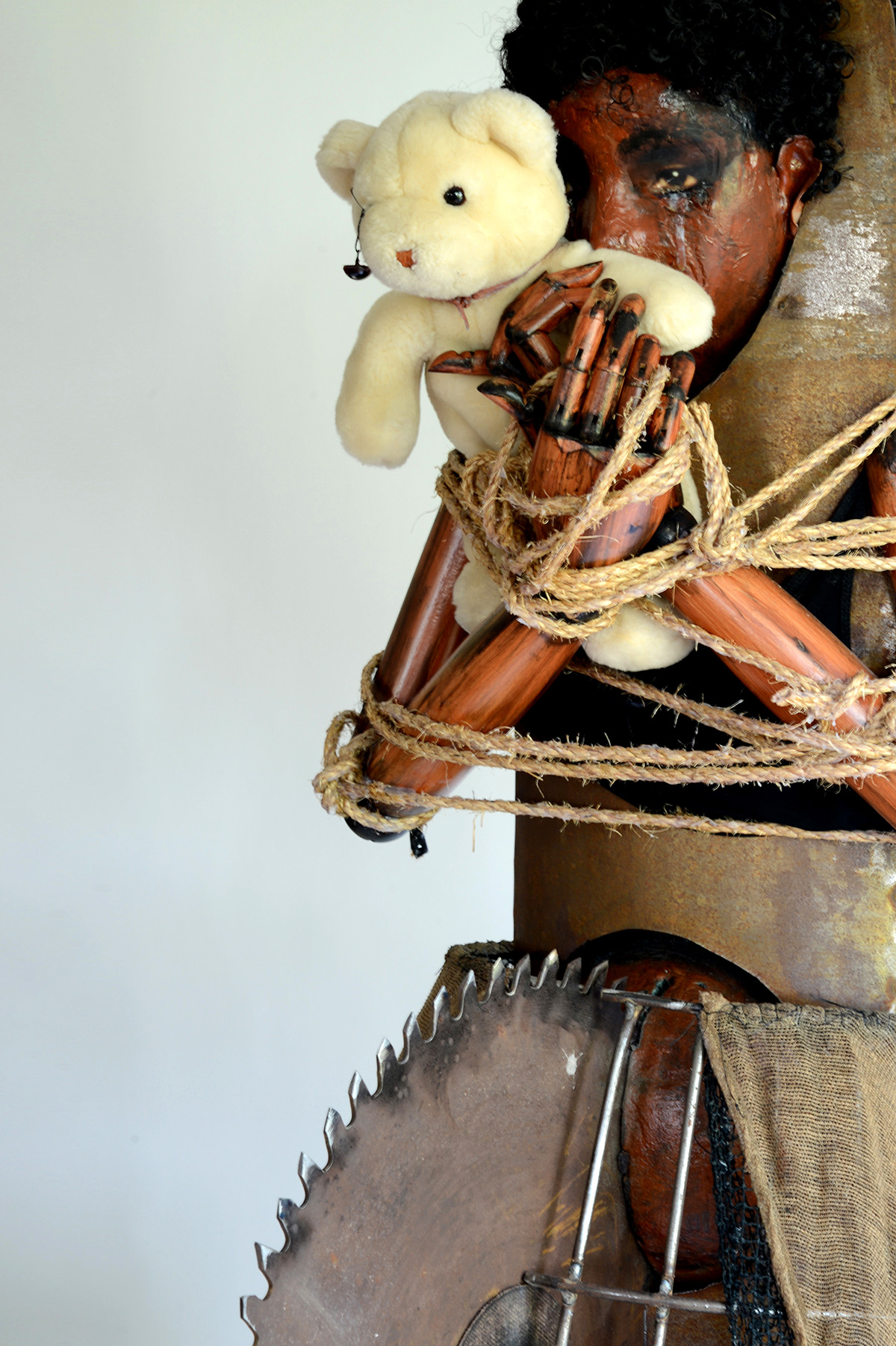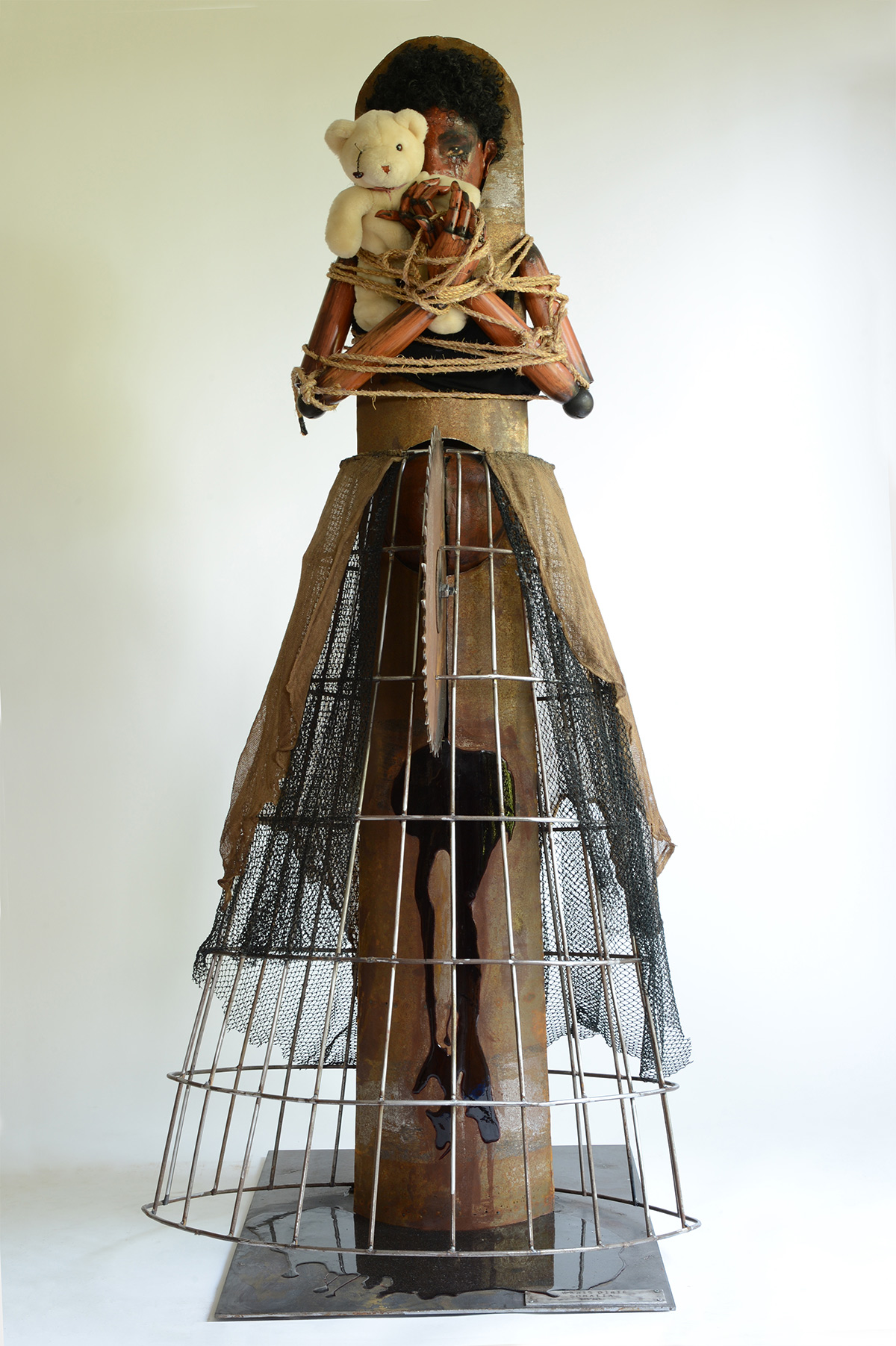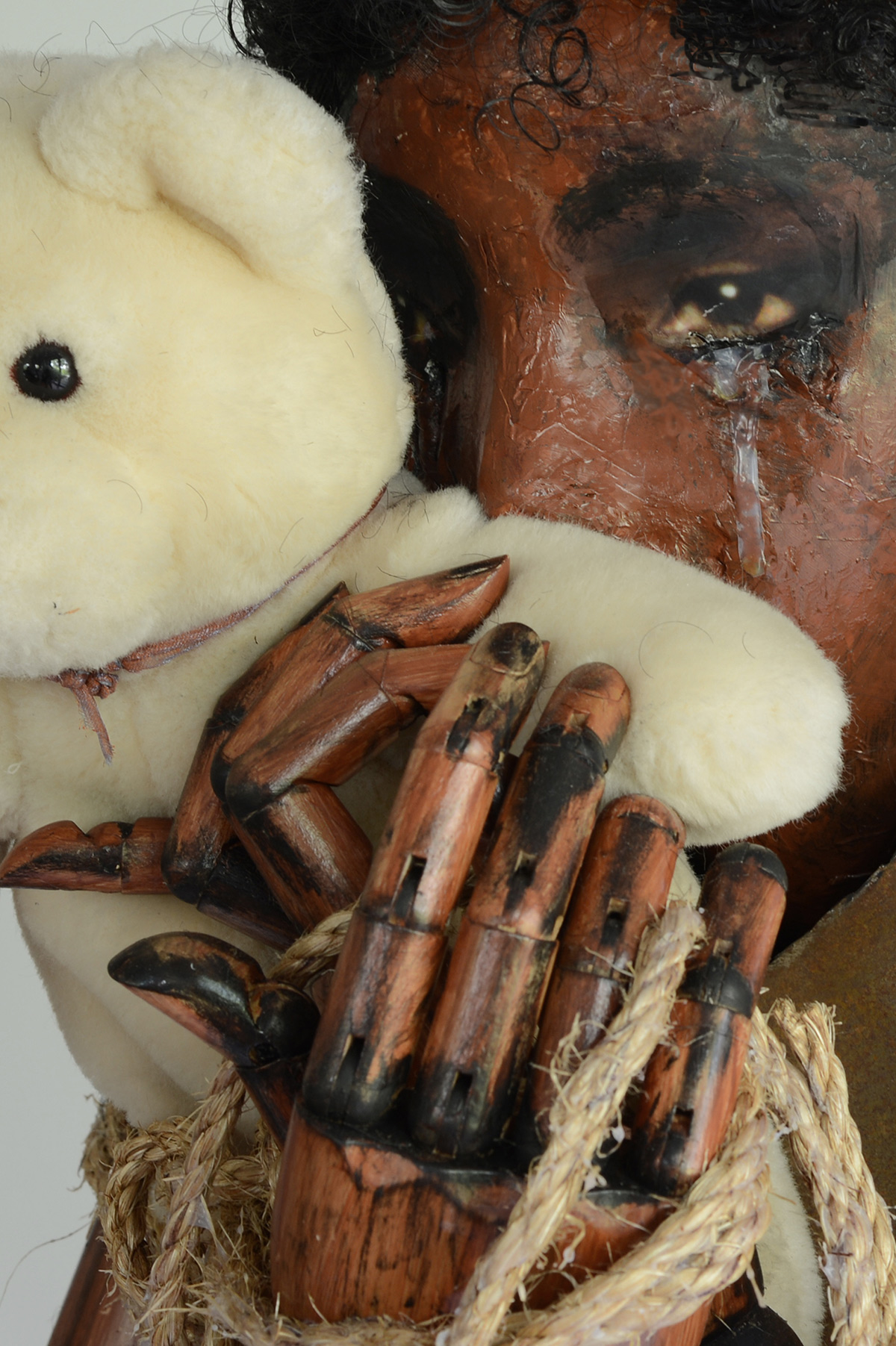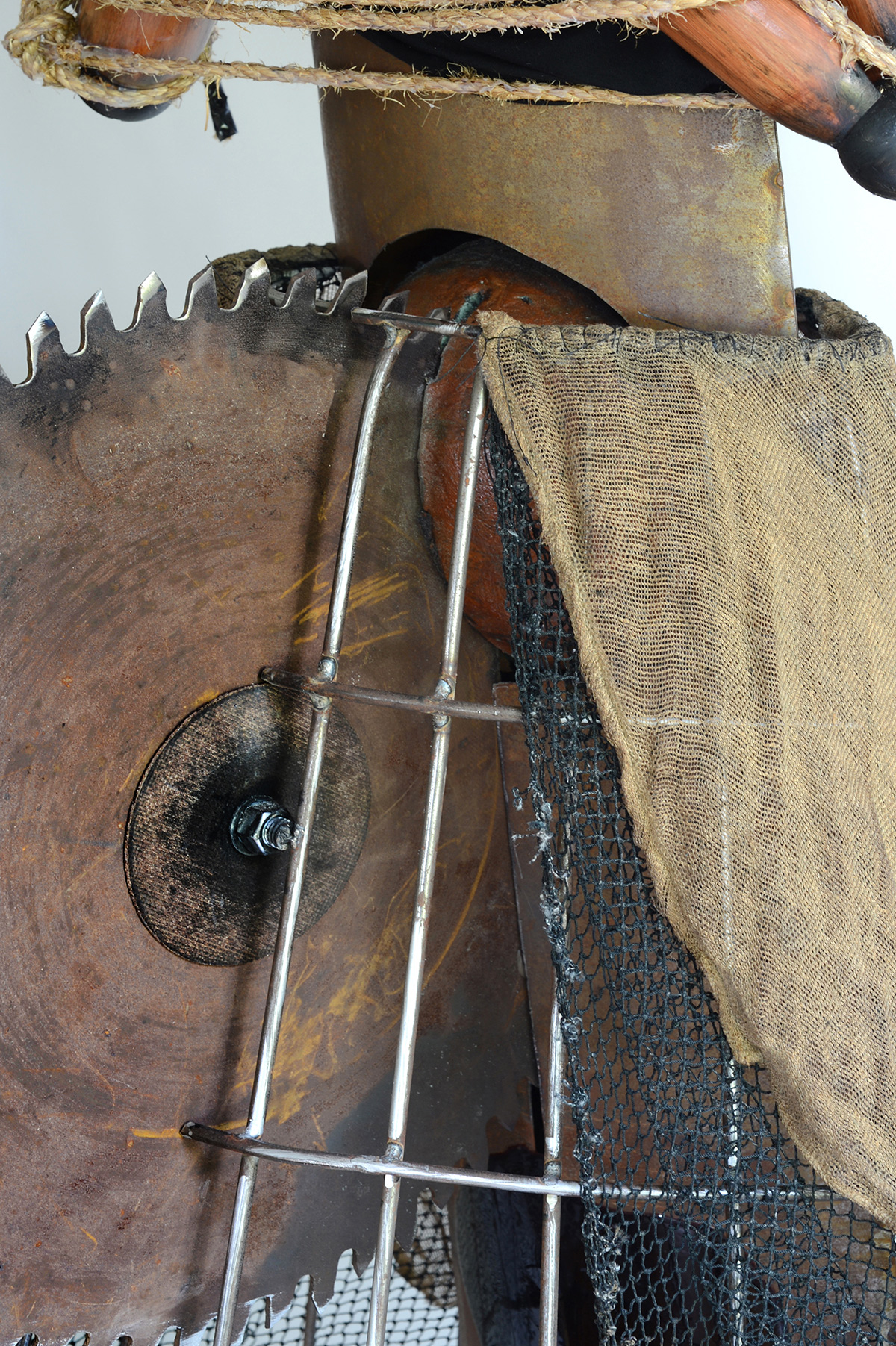
A Survivor of Female Genital Mutilation In 1970, Waris Dirie was five years old and living with her family of tribal desert nomads in Somalia when her mother brought her to be cut. Like her mother and her sisters before her she was subjected to Female Genital Mutilation to control her sexuality, ensure virginity before marriage, fidelity afterwards, and to increase male pleasure.1 Muslim population groups are the most likely to practice FGM, but it is also performed within Christian groups and groups of Ethiopian Jews for social, economic and political reasons.2 There are no religious texts that support this practice in any religion. Its prevalence is dependent on the cultural belief that “there are bad things between a girl's legs, a woman is considered dirty, oversexed and unmarriageable unless those parts–the clitoris, the labia minora, and most of the labia majora-are removed. Then the wound is stitched shut, leaving only a small opening and a scar where the genitals had been.”3 The old woman who performed FGM on Waris “fished out a broken razor blade…spit on it and wiped it on her dress…the next thing (she) felt was (her) flesh being cut away…(She) heard the blade sawing back and forth through (her)skin.” The woman used acacia thorns to puncture the skin around the gaping wound that she had created and sewed it up leaving only a miniscule hole, the diameter of a matchstick, through which urine-and later menstrual blood could pass. This mutilation caused Waris a lifetime of pain and suffering.4 When Waris was a teenager in Somalia her family arranged for her marriage to a much older man. She escaped and eventually found her way to London where she was working in McDonalds and spotted by the photographer Terrence Donovan. By 1987 she was gracing the covers of fashion magazines and runways all over the world. Waris founded The Desert Flower Foundation to help eradicate the practice of FGM which mutilates a girl every 11 seconds somewhere in the world. Her organization has saved over 1000 girls from undergoing this violation to their bodies and also acts as a support center for families and girls who remain at risk. (click to continue)
1. http://www.unfpa.org/female-genital-mutilation 2. https://www.womenshealth.gov/publications/our-publications/fact-sheet/female-genital-cutting.html 3. Dirie, Waris and Miller, Cathleen, “Desert Flower: The Extraordinary Journey of a Desert Nomad,” William Morrow, 1998 4. http://www.fgmnetwork.org/articles/Waris.html
A Survivor of Female Genital Mutilation In 1970, Waris Dirie was five years old and living with her family of tribal desert nomads in Somalia when her mother brought her to be cut. Like her mother and her sisters before her she was subjected to Female Genital Mutilation to control her sexuality, ensure virginity before marriage, fidelity afterwards, and to increase male pleasure.1 Muslim population groups are the most likely to practice FGM, but it is also performed within Christian groups and groups of Ethiopian Jews for social, economic and political reasons.2 There are no religious texts that support this practice in any religion. Its prevalence is dependent on the cultural belief that “there are bad things between a girl's legs, a woman is considered dirty, oversexed and unmarriageable unless those parts–the clitoris, the labia minora, and most of the labia majora-are removed. Then the wound is stitched shut, leaving only a small opening and a scar where the genitals had been.”3 The old woman who performed FGM on Waris “fished out a broken razor blade…spit on it and wiped it on her dress…the next thing (she) felt was (her) flesh being cut away…(She) heard the blade sawing back and forth through (her)skin.” The woman used acacia thorns to puncture the skin around the gaping wound that she had created and sewed it up leaving only a miniscule hole, the diameter of a matchstick, through which urine-and later menstrual blood could pass. This mutilation caused Waris a lifetime of pain and suffering.4 When Waris was a teenager in Somalia her family arranged for her marriage to a much older man. She escaped and eventually found her way to London where she was working in McDonalds and spotted by the photographer Terrence Donovan. By 1987 she was gracing the covers of fashion magazines and runways all over the world. Waris founded The Desert Flower Foundation to help eradicate the practice of FGM which mutilates a girl every 11 seconds somewhere in the world. Her organization has saved over 1000 girls from undergoing this violation to their bodies and also acts as a support center for families and girls who remain at risk. (click to continue)
1. http://www.unfpa.org/female-genital-mutilation 2. https://www.womenshealth.gov/publications/our-publications/fact-sheet/female-genital-cutting.html 3. Dirie, Waris and Miller, Cathleen, “Desert Flower: The Extraordinary Journey of a Desert Nomad,” William Morrow, 1998 4. http://www.fgmnetwork.org/articles/Waris.html
A Survivor of Female Genital Mutilation In 1970, Waris Dirie was five years old and living with her family of tribal desert nomads in Somalia when her mother brought her to be cut. Like her mother and her sisters before her she was subjected to Female Genital Mutilation to control her sexuality, ensure virginity before marriage, fidelity afterwards, and to increase male pleasure.1 Muslim population groups are the most likely to practice FGM, but it is also performed within Christian groups and groups of Ethiopian Jews for social, economic and political reasons.2 There are no religious texts that support this practice in any religion. Its prevalence is dependent on the cultural belief that “there are bad things between a girl's legs, a woman is considered dirty, oversexed and unmarriageable unless those parts–the clitoris, the labia minora, and most of the labia majora-are removed. Then the wound is stitched shut, leaving only a small opening and a scar where the genitals had been.”3 The old woman who performed FGM on Waris “fished out a broken razor blade…spit on it and wiped it on her dress…the next thing (she) felt was (her) flesh being cut away…(She) heard the blade sawing back and forth through (her)skin.” The woman used acacia thorns to puncture the skin around the gaping wound that she had created and sewed it up leaving only a miniscule hole, the diameter of a matchstick, through which urine-and later menstrual blood could pass. This mutilation caused Waris a lifetime of pain and suffering.4 When Waris was a teenager in Somalia her family arranged for her marriage to a much older man. She escaped and eventually found her way to London where she was working in McDonalds and spotted by the photographer Terrence Donovan. By 1987 she was gracing the covers of fashion magazines and runways all over the world. Waris founded The Desert Flower Foundation to help eradicate the practice of FGM which mutilates a girl every 11 seconds somewhere in the world. Her organization has saved over 1000 girls from undergoing this violation to their bodies and also acts as a support center for families and girls who remain at risk. 1. http://www.unfpa.org/female-genital-mutilation 2. https://www.womenshealth.gov/publications/our-publications/fact-sheet/female-genital-cutting.html 3. Dirie, Waris and Miller, Cathleen, “Desert Flower: The Extraordinary Journey of a Desert Nomad,” William Morrow, 1998 4. http://www.fgmnetwork.org/articles/Waris.html

A Survivor of Female Genital Mutilation In 1970, Waris Dirie was five years old and living with her family of tribal desert nomads in Somalia when her mother brought her to be cut. Like her mother and her sisters before her she was subjected to Female Genital Mutilation to control her sexuality, ensure virginity before marriage, fidelity afterwards, and to increase male pleasure.1 Muslim population groups are the most likely to practice FGM, but it is also performed within Christian groups and groups of Ethiopian Jews for social, economic and political reasons.2 There are no religious texts that support this practice in any religion. Its prevalence is dependent on the cultural belief that “there are bad things between a girl's legs, a woman is considered dirty, oversexed and unmarriageable unless those parts–the clitoris, the labia minora, and most of the labia majora-are removed. Then the wound is stitched shut, leaving only a small opening and a scar where the genitals had been.”3 The old woman who performed FGM on Waris “fished out a broken razor blade…spit on it and wiped it on her dress…the next thing (she) felt was (her) flesh being cut away…(She) heard the blade sawing back and forth through (her)skin.” The woman used acacia thorns to puncture the skin around the gaping wound that she had created and sewed it up leaving only a miniscule hole, the diameter of a matchstick, through which urine-and later menstrual blood could pass. This mutilation caused Waris a lifetime of pain and suffering.4 When Waris was a teenager in Somalia her family arranged for her marriage to a much older man. She escaped and eventually found her way to London where she was working in McDonalds and spotted by the photographer Terrence Donovan. By 1987 she was gracing the covers of fashion magazines and runways all over the world. Waris founded The Desert Flower Foundation to help eradicate the practice of FGM which mutilates a girl every 11 seconds somewhere in the world. Her organization has saved over 1000 girls from undergoing this violation to their bodies and also acts as a support center for families and girls who remain at risk. 1. http://www.unfpa.org/female-genital-mutilation 2. https://www.womenshealth.gov/publications/our-publications/fact-sheet/female-genital-cutting.html 3. Dirie, Waris and Miller, Cathleen, “Desert Flower: The Extraordinary Journey of a Desert Nomad,” William Morrow, 1998 4. http://www.fgmnetwork.org/articles/Waris.html